Major Bob Haston - The Disaster of Mission #17
Shot Down, Severely Burned, 5 Crewmen Captured, 5 Killed
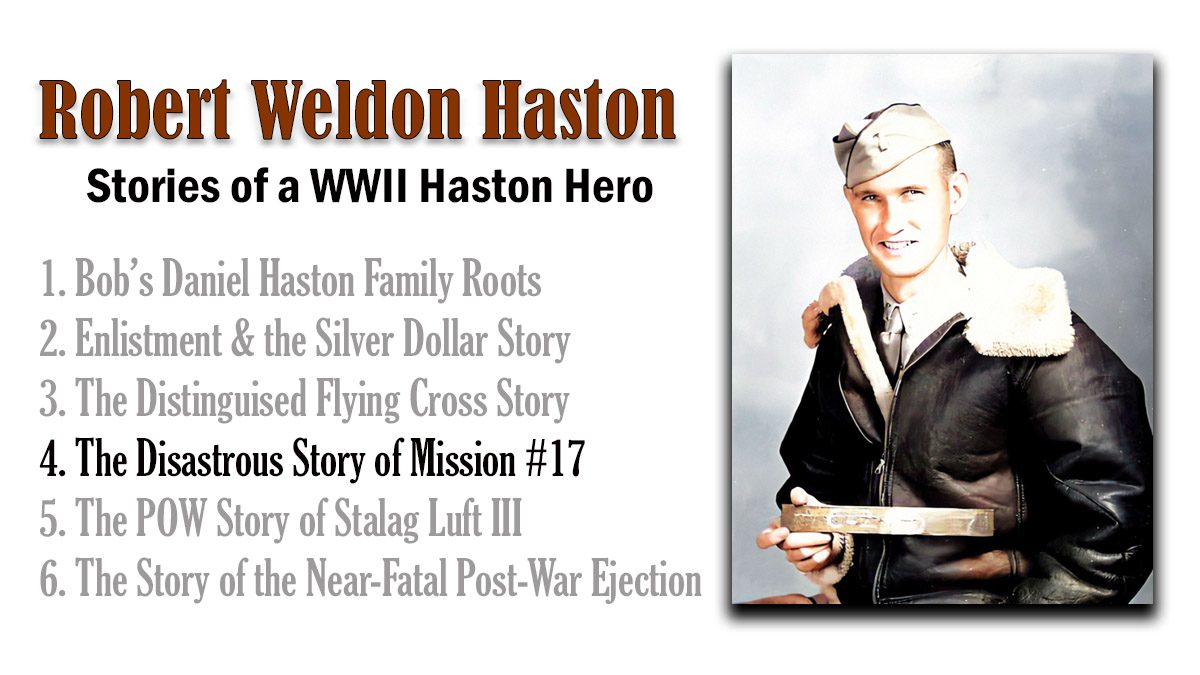
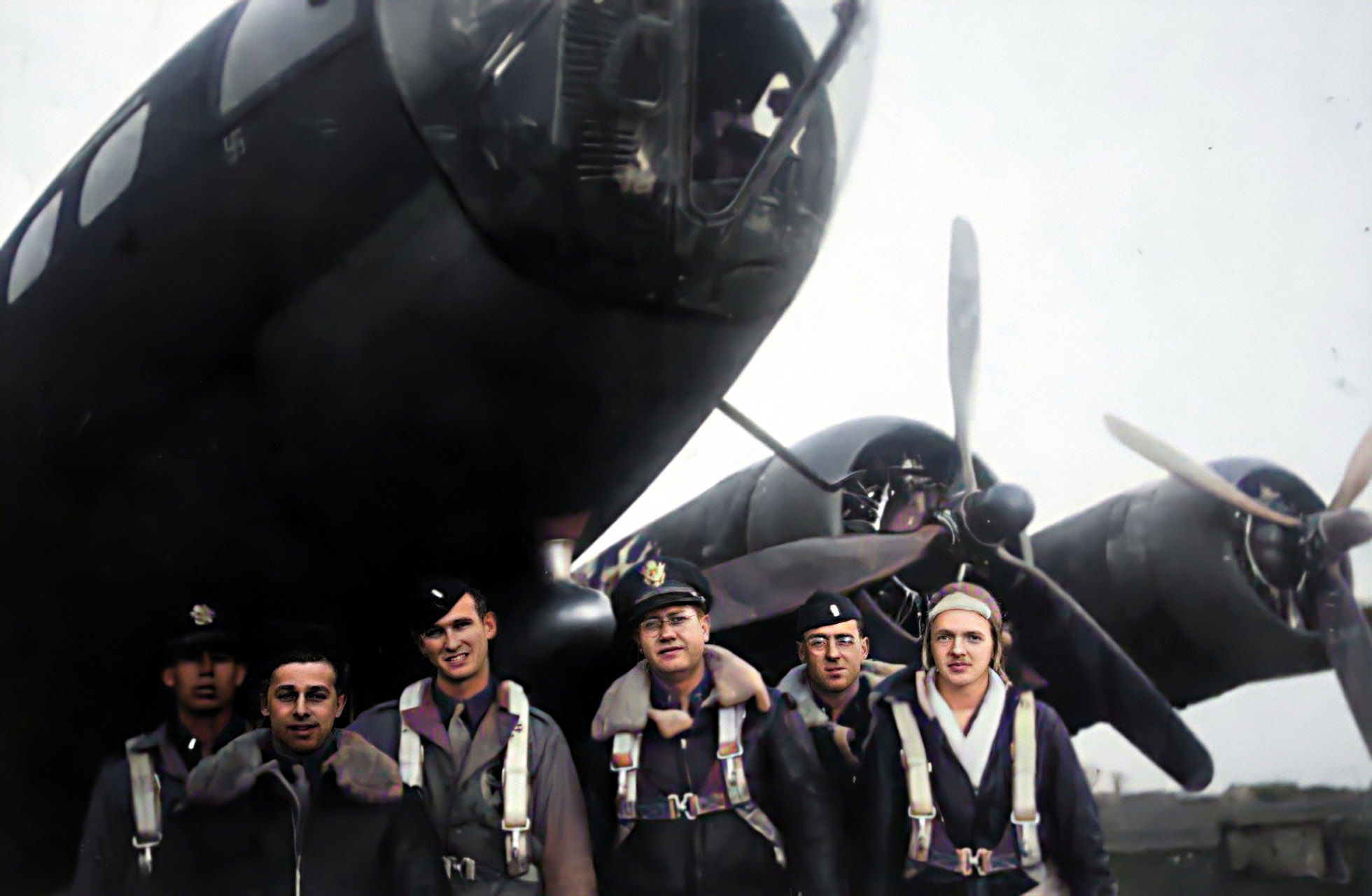
Source: 2nd Lt. Harold N. Sheaffer Story (by Lowell Silverman)
February 20, 1944, was the start of what came to be known as Big Week. The raids targeted German aircraft factories. Even more important than the factories themselves was the opportunity to engage and decimate the German Luftwaffe [Air Force]. German fighters had little choice but to oppose the raids and were pounced on by escorting Allied fighters. Although British and American losses were heavy, German losses were proportionally far higher—an important step in the Allies achieving air supremacy prior to the invasion of Normandy that spring.
During Big Week, Lieutenant Sheaffer (Navigator on Pilot Bob Haston’s crew) and the remainder of the crew flew three missions in as many days. They flew aboard Aces n’ eights during the first two missions of the offensive. On February 20, 1944, the 527th Bomb Squadron crew bombed the Junkers aircraft factory at Bernburg, Germany. The following day, the squadron bombed Quakenbruck and Bramsche.
On February 22, 1944, the crew took off from Kimbolton aboard B-17F 42-29829, nicknamed Sons o’ Satan, piloted by 1st Lieutenant Haston and 2nd Lieutenant Foy R. Clingman. Their target was the Junkers factory at Halberstadt, Germany. The raid was Sheaffer’s [and Bob Haston’s] 17th combat mission.
The Target
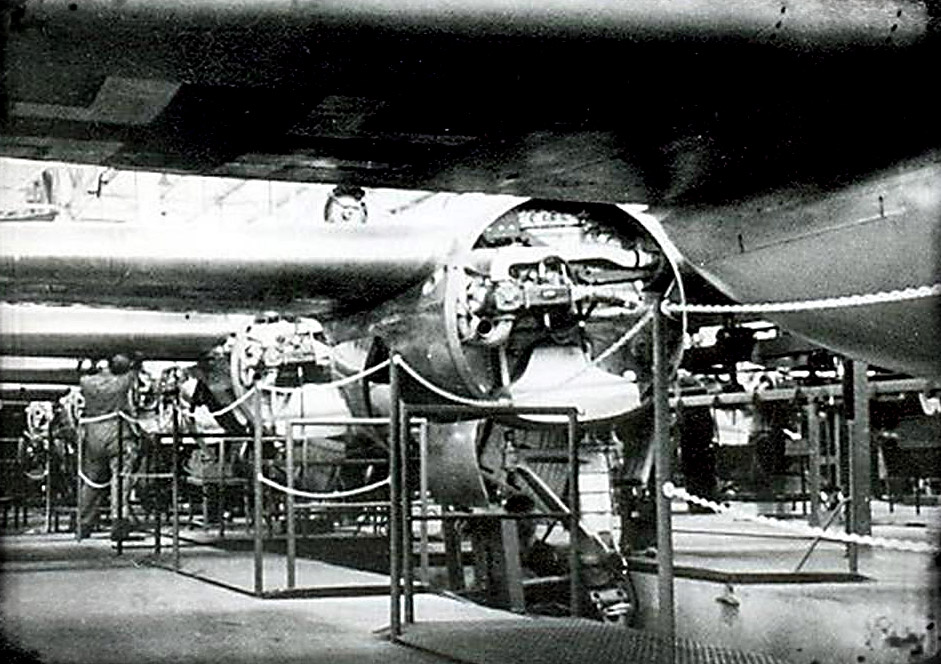
Navigation proved very difficult on the trip due to cloud conditions. This in turn made dodging of enemy flak implacements [sic] impossible. As a result intense and accurate flak was encountered along the route and most of the ships were damaged. Fighters were also up in numbers on this raid. All types were met and their attacks were persistent and often approaching the fanatical point.
527th Bomb Squadron history for the week
Most of what is known about Lieutenant Sheaffer’s fate comes from a Missing Air Crew Report (M.A.C.R.) based largely on accounts of the five survivors. Lieutenant Haston recalled later that Lieutenant Sheaffer “called up after bombs away saying we had a bomb hung up.” Sheaffer was last seen in the bomb bay without a parachute attempting to release the bomb. [“Most B-17 crew members wore only the harness for the parachute in combat, keeping the parachute itself nearby” – Paul J. Collins]. Haston estimated that “Three minutes after ‘Bombs Away’” the B-17 was hit and severely damaged by 20 mm cannon shells fired by enemy fighters. Survivors recalled that engines numbers 2 and 3 as well as the bomb bay were all on fire. The flight engineer, Technical Sergeant Kenneth E. Raack, was hit while manning the top turret and killed instantly. None of the crew saw what happened to Lieutenant Sheaffer. Haston wrote that the survivors’ “conclusions are that Sheaffer was either forced out by the fire or that he was hit and knocked out by 20 mm fire from the attacking fighters.” Half the crew, five men, were able to parachute to safety and were liberated from captivity at the end of the war.
Bob Haston's Personal Experience, as Told by Grandson Brad Britain
On his way to the ground, he was on fire the entire time. To his recollection, he did not remember screaming, but others in his crew remembered an awful screaming coming from the direction they recalled him falling in. Considering the pain and shock of being set on fire, I can only imagine that he certainly could have been screaming the entire way down without knowing it.
Now here’s where I probably don’t take the turn you expected. The Germans saved his life. (Yes, they certainly didn’t help in the beginning, but the guys on the ground helped afterward…. )
My grandfather was found, burnt severely, but still alive, by the Germans, who rushed him (or rushed as fast as you can expect in a war environment) to a hospital. The hospital happened to have a POW British doctor, who was what some would consider being one of the best POW surgeons/doctors in the war. In what today’s medical professionals would consider “hell”, this doctor was able to not only save my grandfather’s life, but was also able to ease his pain, graft new skin on some of the worst spots, and prevent infection (which killed most burn victims of the time). Now, to my grandfather’s credit, he was a tough-as-nails Texas boy, and a God blessed survivor.
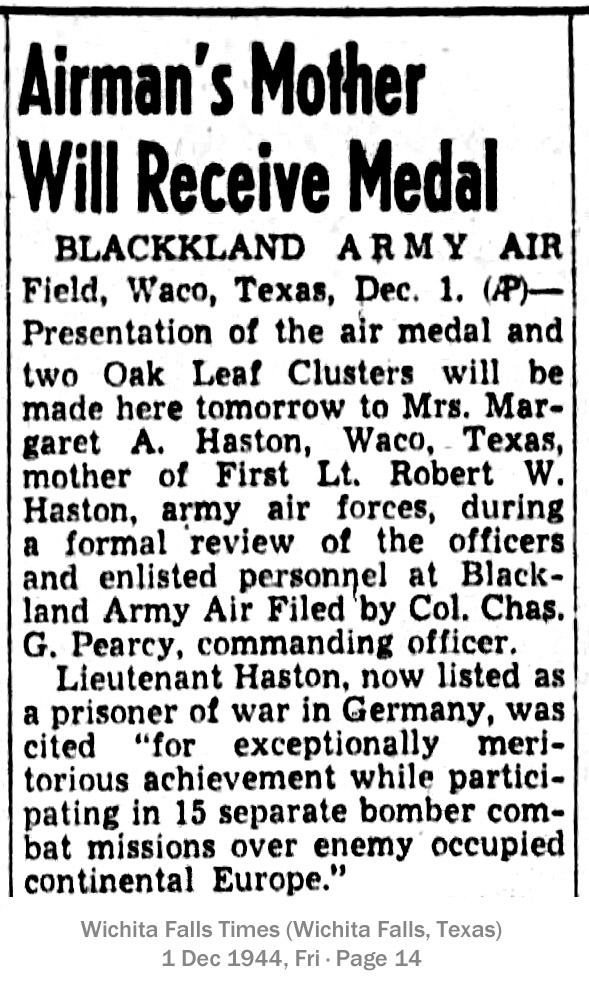
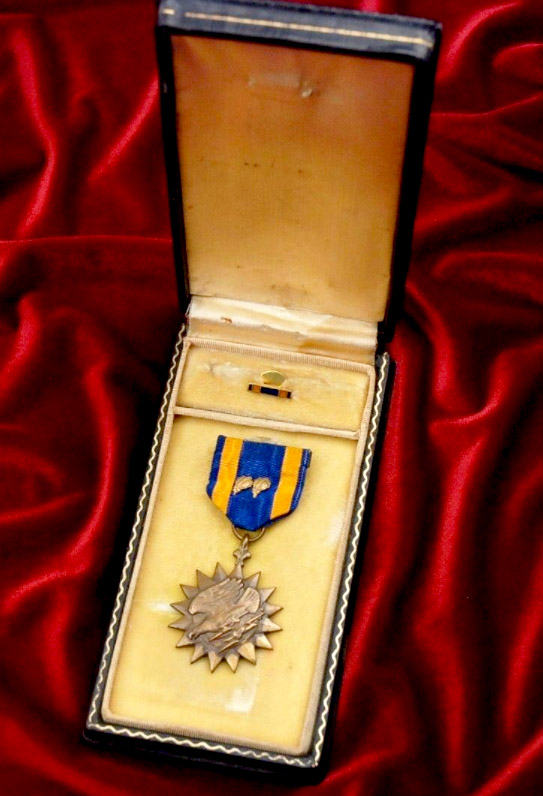
Half (5 of 10) of the crew died in the incident and the other half were captured and became prisoners of war.

That Lucky Silver "Peace Dollar"
“When I was shot down on February 22, 1944, I still had the Peace Dollar with me. I was captured and sent for interrogation in Frankfort, Germany. They strip-searched all Prisoners of War. Each time I knew I was going to be searched, I would put the Peace Dollar in my bandages or in the sweater that I had covering my head, which had been severely burned. I believe that because of my injuries, I went through interrogation without being questioned and was sent to the Prisoner of War Hospital in Obermassfeld Germany. After my hospital stay, there were no more searches. I was able to carry the dollar in my pocket for the remainder of the war.”
“I was held prisoner in Stalag-Luft Ill in Sagan.” But that’s another story for the next article.
If you appreciated this article, please share it with others who might also enjoy it.


One thought on “Major Bob Haston – Disastrous Mission #17”
Thank you for putting these stories together and posting them. My siblings and I are very honored to have you tell the stories of our father.